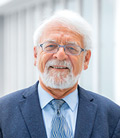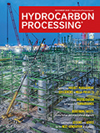Can ammonia be a future energy storage solution?
Ammonia is well known as a fertilizer. However, it is also a potential carbon-free fuel and an excellent solution for storage of renewable electricity, especially if the syngas needed for producing the ammonia is made by electrolysis.
IP: 10.1.103.123
This is a preview of our premium content. Thank you for your interest—please
log in or
subscribe to read the full article.
The Authors
Hansen, J. B. - Haldor Topsoe, Copenhagen, Denmark
John Bøgild Hansen is Senior Principal Research Scientist with Haldor Topsoe. In 1975, he graduated with an MSc degree in chemical engineering from DTU and joined Topsoe’s catalyst division. Four years later, Mr. Hansen moved to R&D, where he became department manager in 1985. He was responsible for fuel processing for fuel cells and catalyst and process technology for ammonia, methanol, DME, gasoline and reforming. In 2000, he was appointed Senior Scientist and Advisor to the chairman, Dr. Haldor Topsøe, mainly on energy-related issues, such as hydrogen and synthetic fuel production, fuel cell and electrolyzer system development, as well as biomass utilization. In 2014, he rejoined R&D. Mr. Hansen has published more than 70 papers and holds 26 patents.
Skjøth-Rasmussen, M. S. - Haldor Topsoe, Copenhagen, Denmark
Martin Skov Skjøth-Rasmussen is Vice President for technology development in R&D with Haldor Topsoe. After earning an MSc degree in chemical engineering from DTU in 1999, he joined Topsoe R&D to study soot formation in autothermal reforming until 2003. He then worked as Assistant Professor for 2 yr at the Department of Chemical Engineering at DTU, before rejoining Topsoe. Since 2005, he has held several positions within Topsoe R&D, including project management and general management in relation to steam reforming and associated catalysis, materials and technology. In 2012, he was appointed VP of all chemical- and syngas-related R&D activities, and since 2017 he has also been in charge of technology development.
Related Articles
From the Archive








Comments